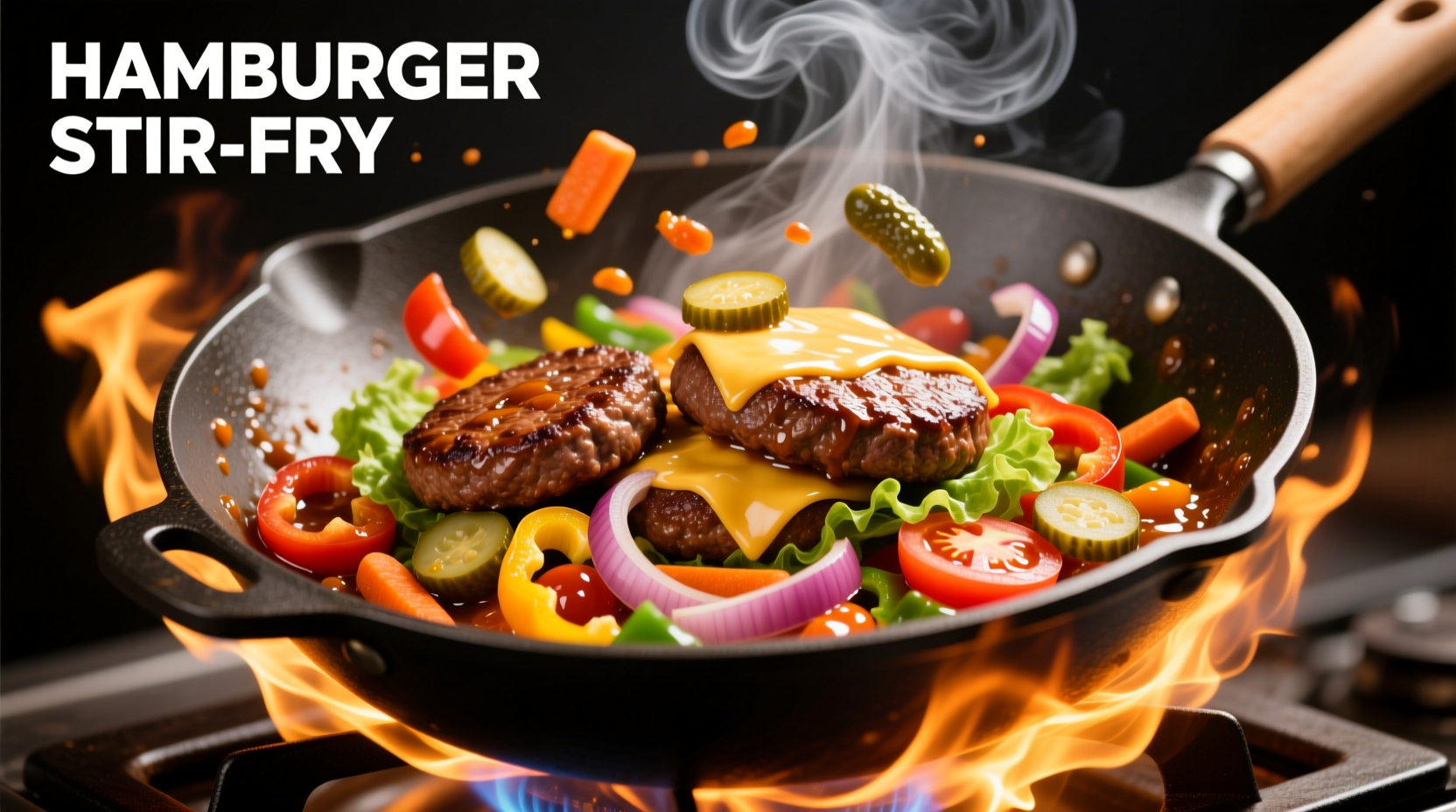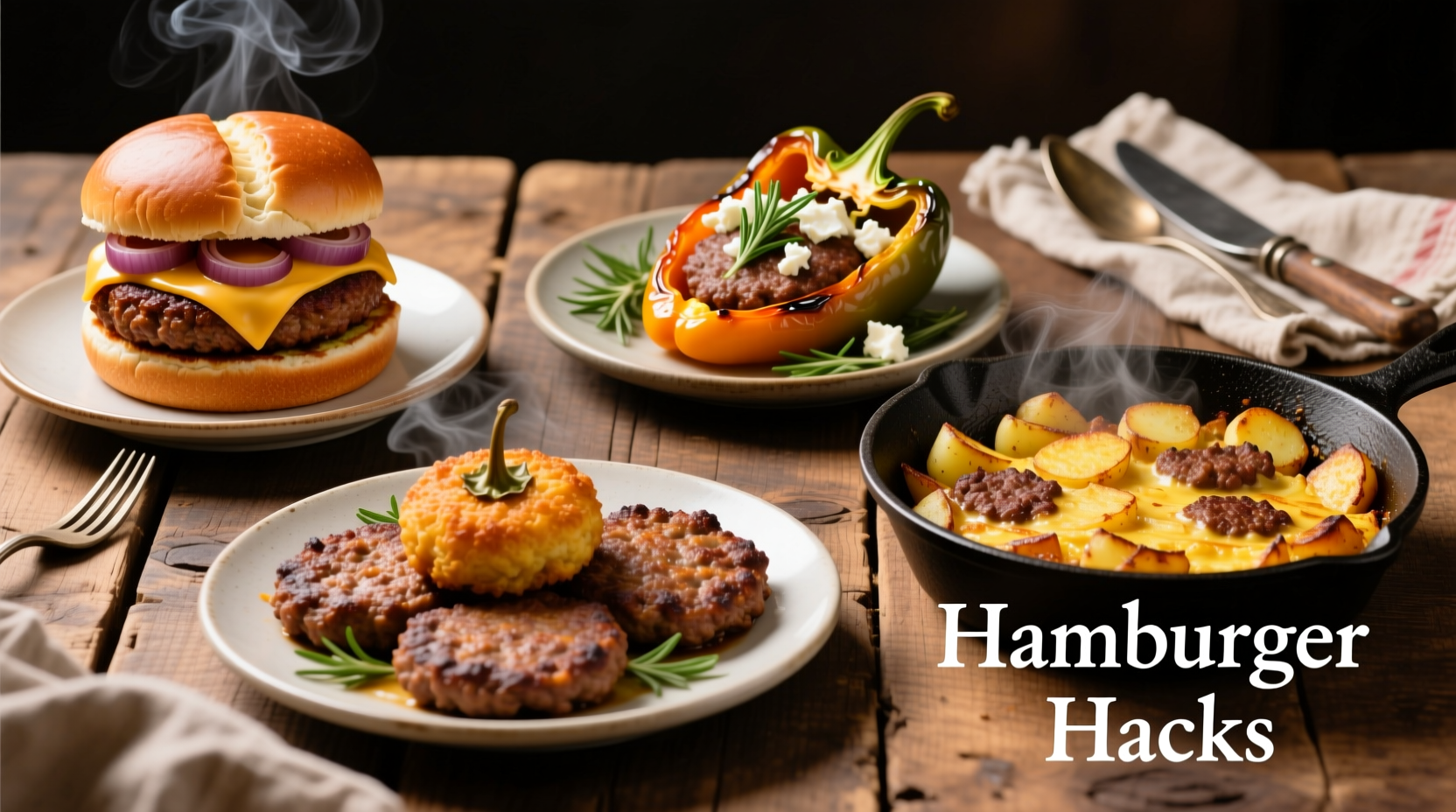Transform your hamburger meat into 15+ delicious meals beyond basic burgers—from weeknight classics to international specialties. This guide delivers practical recipes with precise cooking times, flavor pairing science, and professional techniques to maximize juiciness while avoiding common pitfalls like dryness or shrinking.
Ground beef's versatility makes it a kitchen powerhouse, but most home cooks only scratch the surface of its potential. According to USDA Food Safety and Inspection Service guidelines, properly handling hamburger meat requires keeping it below 40°F until cooking and reaching 160°F internal temperature for safety—critical knowledge whether you're making burgers or experimenting with global recipes.
Quick Weeknight Solutions (Under 30 Minutes)
When time's tight, these streamlined recipes deliver maximum flavor with minimal effort. Professional chefs like Antonio Rodriguez emphasize that the secret to fast, flavorful ground beef dishes lies in proper seasoning technique and controlled heat management.
| Recipe | Active Time | Key Flavor Boosters |
|---|---|---|
| Beef & Broccoli Stir-Fry | 20 minutes | Ginger, toasted sesame oil, rice vinegar |
| Tex-Mex Stuffed Peppers | 25 minutes | Chipotle powder, lime zest, cotija cheese |
| Italian-Style Meatballs | 22 minutes | Fennel seeds, fresh basil, red wine reduction |
Perfect Beef Stir-Fry Technique
For restaurant-quality stir-fries at home, follow this professional sequence:
- Pat meat completely dry before cooking
- Heat wok until smoking hot (critical for proper sear)
- Cook in single layer—never overcrowd the pan
- Add aromatics after meat is nearly done (prevents burning)
- Finish with sauce off direct heat to preserve freshness

International Flavor Adventures
Expand your culinary horizons with these globally inspired preparations. Food historians note that ground meat dishes appear in nearly every world cuisine—evidence of humanity's universal appreciation for this versatile protein.
Turkish Köfte (Spiced Meatballs)
This Anatolian specialty transforms hamburger into aromatic, grillable patties. The key is proper spice blooming:
- 1 lb lean hamburger (15-20% fat)
- 1 small onion, finely grated
- 2 garlic cloves, minced
- 1 tsp each: cumin, paprika, sumac
- 1/2 tsp allspice (bloomed in 1 tsp hot olive oil)
- 1 egg yolk (for binding without heaviness)
Mix gently by hand—overworking creates tough meatballs. Form into oval shapes and grill over medium heat for 8-10 minutes, turning once. Serve with grilled tomatoes and mint yogurt.
Leftover Magic: Transforming Cooked Hamburger
Don't let cooked hamburger go to waste. Culinary research shows properly stored cooked ground beef maintains quality for 3-4 days in the refrigerator. Try these creative second-life applications:
Hamburger Fried Rice
The ideal ratio for perfect fried rice: 2 cups cooked rice to 1 cup cooked hamburger. Professional chefs recommend using day-old rice for superior texture. Key technique: cook in two stages—first the aromatics and meat, then the rice in a separate batch for optimal texture.
Science-Backed Success Tips
Understanding the chemistry behind ground beef cooking prevents common failures:
- Fat ratio matters: 80/20 for burgers, 85/15 for sauces/stir-fries
- Salt timing: Season immediately before cooking for best texture (contrary to popular belief)
- Temperature control: Never press burgers—that squeezes out precious juices
- Resting time: 5 minutes minimum after cooking allows juices to redistribute
The American Meat Science Association confirms that pressing burgers can expel up to 30% of their natural juices, directly impacting final moisture content. For optimal results, resist the urge to flatten your patties during cooking.
Seasonal Adaptations
Adjust your hamburger cooking based on ambient conditions:
- Summer: Add 1-2 tbsp breadcrumbs per pound to prevent excessive shrinkage on hot grills
- Winter: Let meat sit at room temperature 15 minutes before cooking for even heating
- High humidity: Increase cooking temperature slightly to achieve proper sear
Troubleshooting Common Issues
Solve these frequent hamburger cooking problems with professional techniques:
Dry Results
Cause: Overcooking or insufficient fat content. Solution: Use a meat thermometer (160°F is safe), incorporate moisture-rich ingredients like grated zucchini or mushrooms (up to 25% of total weight).
Shrinking Patties
Cause: Uneven heat distribution or excessive handling. Professional fix: Make patties slightly larger than desired with a small dimple in the center to counteract natural contraction during cooking.
Essential Equipment Guide
Invest in these tools for hamburger success:
- Digital instant-read thermometer (critical for food safety)
- Cast iron skillet (for superior sear)
- Bamboo skewers (for perfect meatball shaping)
- Perforated grill press (for even cooking without juice loss)
Frequently Asked Questions
Can I freeze uncooked hamburger patties?
Yes, with proper technique. Separate patties with parchment paper, freeze solid on a tray, then transfer to airtight containers. USDA recommends using within 3-4 months for best quality. Never thaw at room temperature—use refrigerator thawing for safety.
What's the best fat ratio for different hamburger recipes?
80/20 (80% lean) works best for burgers and meatloaf where juiciness is critical. 85/15 is ideal for sauces, stir-fries, and casseroles where excess fat would be undesirable. For stuffed peppers or similar dishes requiring structural integrity, use 90/10 with added moisture elements like grated vegetables.
How do I prevent hamburger from sticking to the grill?
Clean and preheat your grill to 400-450°F first. Oil the grates with a high-smoke-point oil using tongs and a folded paper towel. Place patties at a 45° angle to grates, then don't move them for 3-4 minutes to allow proper sear formation. The natural non-stick properties develop as proteins coagulate.
Can I substitute ground turkey for hamburger in these recipes?
Yes, but adjust technique. Ground turkey requires added moisture (1-2 tbsp oil per pound) and careful temperature monitoring (165°F). It lacks hamburger's natural fat, so incorporate grated vegetables or breadcrumbs. Avoid overmixing to prevent toughness. Best substitutes work in dishes with sauces like meatloaf or stuffed peppers.











 浙公网安备
33010002000092号
浙公网安备
33010002000092号 浙B2-20120091-4
浙B2-20120091-4